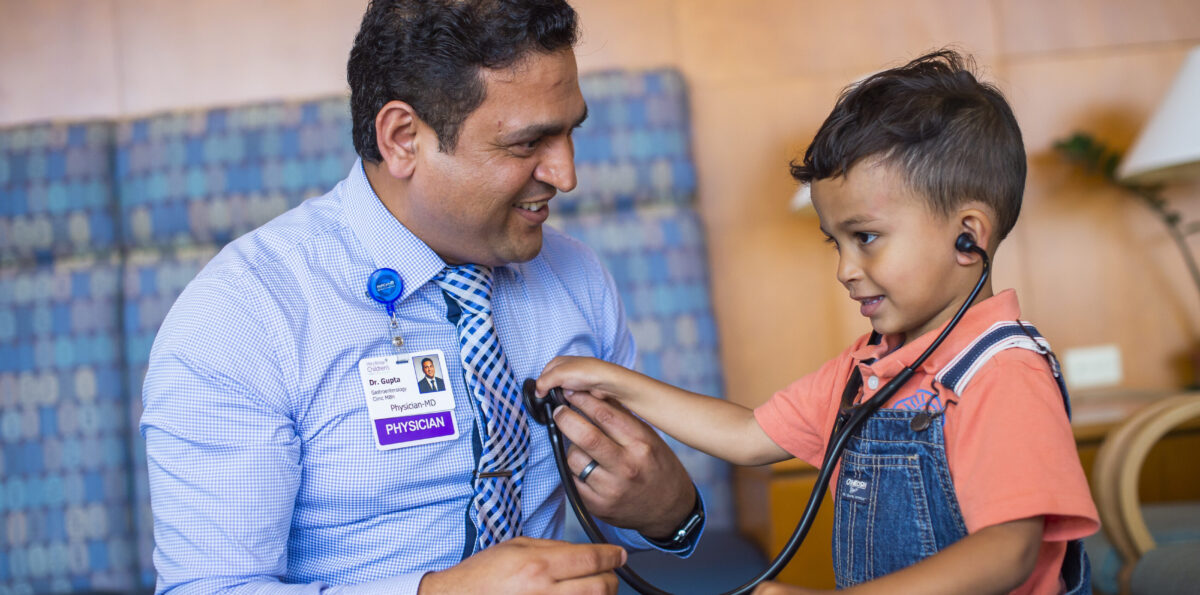Fatty liver disease – a rising trend in kids

Learn why early intervention is key to your child’s future health
“The liver is a very forgiving organ, but you cannot keep irritating it,” says Dr. Rohit Gupta, a pediatric gastroenterologist at Mary Bridge Children’s. One of Dr. Gupta’s specialties is liver disorders in children. He also treats kids for various digestive and intestinal conditions, like inflammatory bowel disease and celiac disease.
A child’s fatty liver diagnosis is undoubtedly very concerning but identifying the condition early in childhood is key to preventing severe health problems as an adult.
According to Dr. Gupta, fatty liver disease is fast becoming the primary reason for adult life-saving liver transplants. “We need to help our young patients make certain lifestyle changes now that can significantly reduce and reverse potential liver damage and dysfunction later in life,” he notes.
Rates of fatty liver disease cases in children are soaring
Dr. Gupta and his team at Mary Bridge Children’s GI Clinic have seen a significant increase in pediatric cases of fatty liver disease over the past decade.
“This is a growing dietary problem,” explains Dr. Gupta. “The rise of fatty liver disease parallels the trends of obesity. We are diagnosing kids at a much younger age compared to 10 years ago.”
Your child’s risk factors for fatty liver disease include:
- Childhood obesity
- Elevated cholesterol and body mass index (BMI)
- A diet high in sugar and carbohydrates, like soda, fast food, and packaged snacks.
- Family history of obesity and Type 2 diabetes
Why does fat stay in the liver?
One of the primary roles of the liver during digestion is to process the nutrients in food and clear the body of toxins. The liver also stores excess fat. A diet high in sugar and carbohydrates signals the body to produce more insulin. This hormone which regulates the amount of circulating glucose or blood sugar. The increased insulin levels tell the body to store fat in the liver, which can result in fatty liver disease.
Over time, the fat deposits can cause inflammation in the liver. Chronic inflammation damages the liver, and eventually, the liver stops functioning.
How do we diagnose and treat fatty liver disease?
Pediatricians with concerns about your child’s nutritional or dietary needs may recommend further evaluation by pediatric GI specialists like Dr. Gupta and his colleagues at Mary Bridge Children’s.
“Our clinic uses a variety of diagnostic tools to get a clear picture of what is going on in the liver and other organs,” explains Dr. Gupta. “About 10% of kids thought to have fatty liver disease can have a different diagnosis, so it important to get a comprehensive workup to rule out other conditions.”
Your child’s visit to the GI Clinic may include additional tests such as:
- Laboratory bloodwork
- MRI, ultrasound, or other advanced imaging
- Doppler studies to examine the liver’s blood flow
- Liver biopsy
Multidisciplinary approach – “Our goal is a healthy liver”
Currently, no medications cure fatty liver disease. Treatment focuses on prevention and committing to specific lifestyle changes. Dr. Gupta understands that making significant changes to lifestyle factors like diet, nutrition, and exercise can be highly challenging for children and families.
“We take a highly personalized, step-by-step approach to help patients learn to navigate and manage fatty liver disease,” says Dr. Gupta. “In addition to working with our registered dieticians and nutritionists, a complete treatment plan may include teaming up with other Mary Bridge specialists or community wellness programs specially designed for kids.”
Learn more about fatty liver disease and other conditions treated at Mary Bridge Children’s Gastroenterology, Hepatology & Nutrition Clinic. For more information about getting a referral to see Dr. Gupta or one of our GI clinicians, please call 253-792-6630.